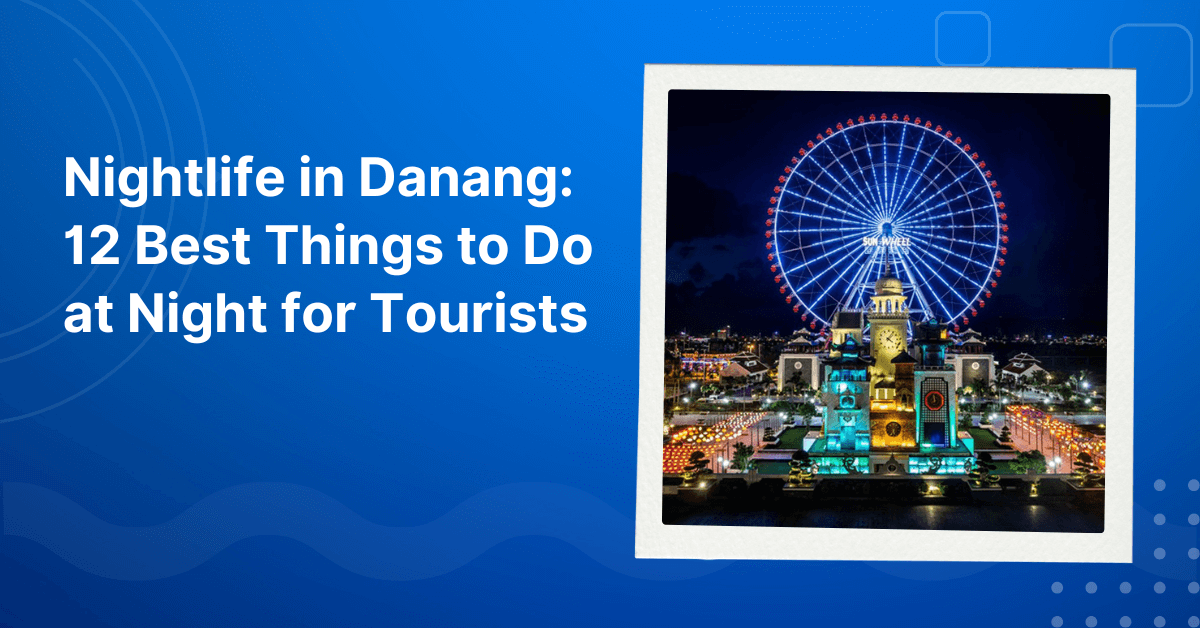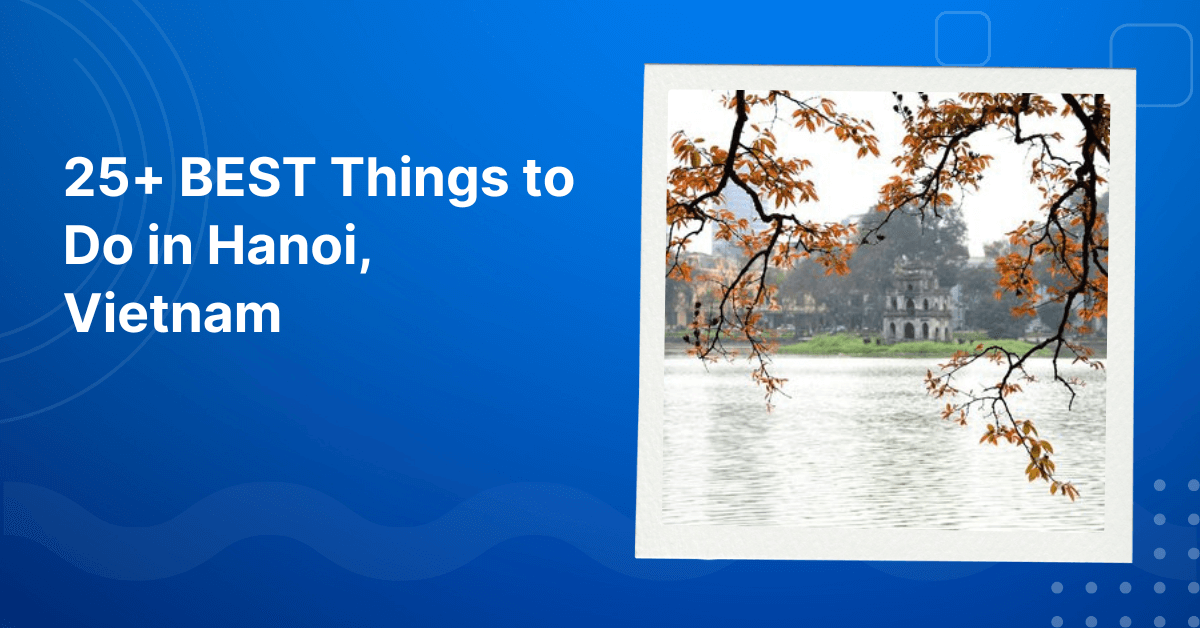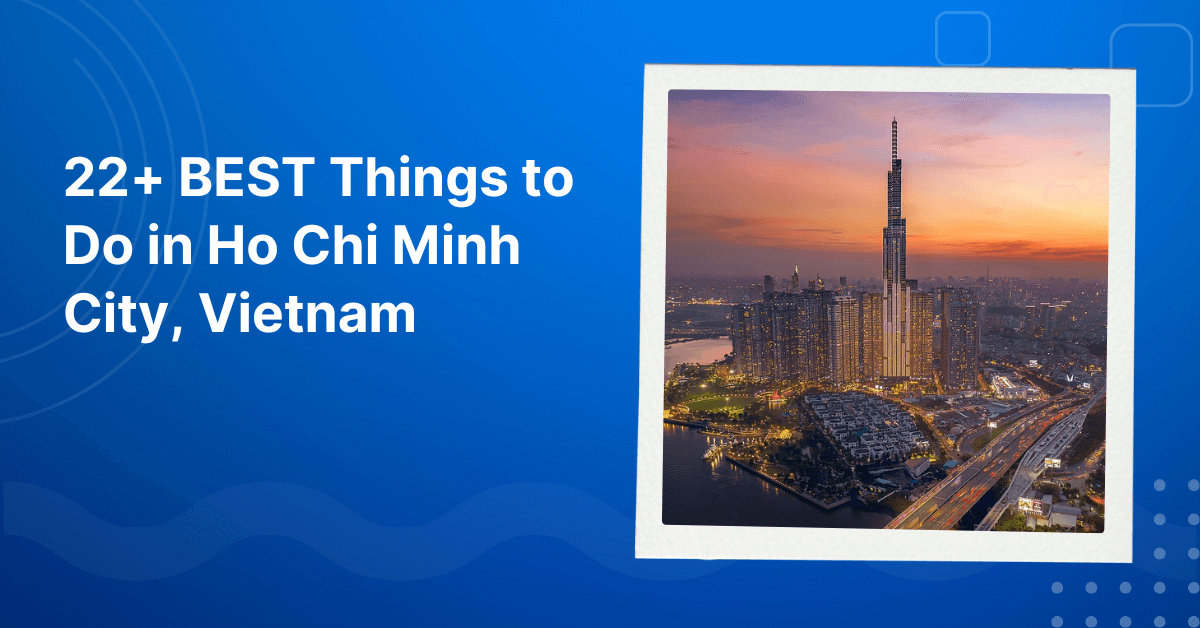Vietnam is known for its stunning natural landscapes and diverse culture, making it an ideal destination for those who love adventure and outdoor activities. Trekking is a popular activity in Vietnam, as it allows visitors to immerse themselves in the country’s beautiful scenery and unique culture. With so many options available, it can be overwhelming to choose the best trekking destinations. In this blog post, Vietnam Teaching Jobs (VTJ) compiled a list of the 10 best places for trekking in Vietnam that you shouldn’t miss. From the terraced rice paddies in Sapa to the lush forests of Phong Nha-Ke Bang National Park, these destinations offer unforgettable experiences and breathtaking views that will leave you in awe. So grab your backpack, put on your hiking boots, and let’s explore the best trekking destinations in Vietnam!
>>>Read more: Top 12 most dangerous passes in Vietnam you should know (p.1)
>>>Read more: Top 12 most dangerous passes in Vietnam you should know (P.2)
Reasons to hike in Vietnam
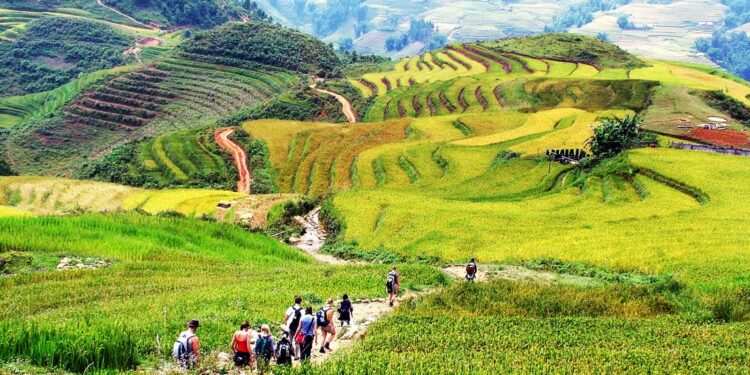
Reasons to hike in Vietnam
Plenty of beautiful trekking routes: Vietnam is home to many stunning natural landscapes, from the rolling hills of Sapa to the dense jungles of Phong Nha-Ke Bang National Park. There are endless opportunities for trekking and hiking in Vietnam, with trails ranging from easy to challenging.
Meet the ethnic minorities: Many of the trekking routes in Vietnam take you through the remote villages of ethnic minority groups, such as the Hmong, Dao, and Tay people. This provides a unique opportunity to learn about their traditional way of life and customs.
Spectacular mountain views: With its rugged terrain and soaring peaks, Vietnam offers some of the most breathtaking mountain views in Southeast Asia. Trekking to the top of a mountain and looking out over the landscape below is an unforgettable experience.
Vietnamese culture: Trekking in Vietnam is not just about the natural scenery – it’s also a chance to immerse yourself in Vietnamese culture. From sampling local cuisine to staying in homestays with local families, there are many ways to experience the country’s unique culture while on a trekking adventure.
>>>Read more: Visiting Halong: a guide to the basics of this beautiful city
>>>Read more: What to prepare when going to a forest in Vietnam
10 Best hiking trails for trekking in Vietnam
1. Trekking Sapa Vietnam
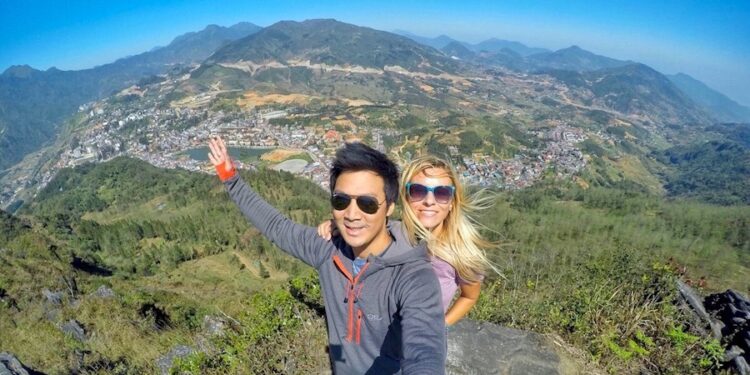
Trekking in Sapa, Vietnam is a must-do activity for those seeking to explore the breathtaking natural beauty
Sapa is located in the northern region of Vietnam and is a haven for trekking enthusiasts. With its stunning natural beauty and cultural diversity, Sapa offers a truly unique trekking experience that is hard to find anywhere else in the world.
Trekking in Sapa, Vietnam is an adventure that will take you through vibrant green landscapes, cascading rice terraces, and lush forests. It’s a journey that is as much about discovering the natural beauty of the region as it is about immersing yourself in the local culture. Trekking in Sapa, Vietnam is a must-do activity for those seeking to explore the breathtaking natural beauty and unique cultural heritage of this northern region. Here are some important things to know before embarking on a trekking adventure in Sapa:
Level of trek: Easy
Highlights: Sapa is famous for its spectacular mountains, and jade-hued rice paddies. One of the highlights of trekking in Sapa is encountering the Vietnamese ethnic minorities who call these mountains home. Trekking through the mountains, you’ll have the opportunity to meet and interact with locals from different ethnic groups, including the Hmong, Dao, and Tay people. You’ll learn about their unique customs, traditions, and way of life, making your trekking experience even more enriching and fulfilling. It also offers diverse and beautiful hiking trails, such as Cat Cat village, Y Linh Ho village, Ta Phin village, Muong Hoa Valley, Ham Rong mountain, Sky Gate, and more. Additionally, Sapa is the home of the highest peak in Vietnam, Fansipan mount (3143 m).
Best time to trek: The best time to trek in Sapa is from March to May when it is dry and clean, or from September to November if you want to enjoy the terraces.
How to get there: Sapa is located 320 km northeast of Hanoi, and there are several ways to get there. You can take a bus, or train, or drive a motorbike on your own. Note that Sapa is a mountainous area and quite far, so it’s only recommended for hardcore riders.
Popular treks in Sapa: There is no specific map if you choose to trek on your own in Sapa. Most people get lost in the beauty of the land and cannot find a way out. So, there are some recommended trek routes for you if you want to experience an easy trekking tour level. These include Lao Chai Village (5 km from the town of Sapa), Sin Chai Village (5 km from the town of Sapa), Ta Van Village (10 km from the town of Sapa), Hau Thao Village (11 km from the town of Sapa), Ta Phin Village (12 km from the town of Sapa), and Ban Ho Village (21 km from the town of Sapa).
Things to keep in mind: When trekking in Sapa, it’s important to wear comfortable, sturdy shoes and bring appropriate clothing for the weather conditions. Also, be aware of the terrain and the difficulty level of your chosen trek, and always follow the guidance of your guide. Lastly, respect the local culture and traditions and be mindful of the environment by taking care not to litter or damage the natural surroundings.
>>>Read more: Top 10 cheap backpacking supplies shops in Hanoi
2. Trekking in Mai Chau
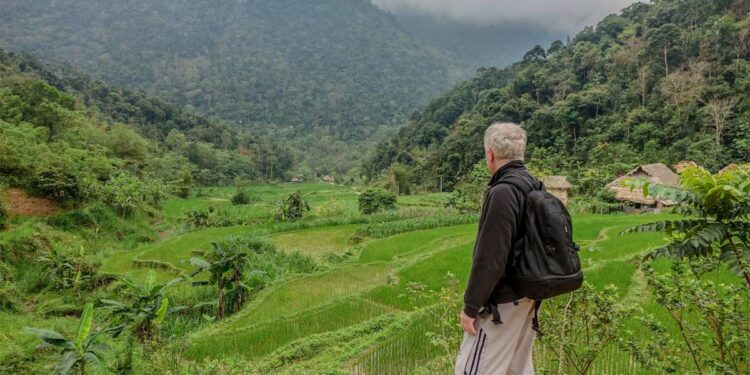
Mai Chau is a great option for those who want to experience an easy trek in Vietnam
Mai Chau is a great option for those who want to experience an easy trek in Vietnam. Located approximately 150 kilometers away from Hanoi, Mai Chau offers a peaceful and laid-back atmosphere with rural valleys to explore. This is an ideal destination for beginners who want to get into trekking.
Level of trek: Easy
Highlights: Mai Chau is only 150 km away from Hanoi, but it feels like you’re entering a whole new world. This place is known for its idyllic, rural valleys, peaceful ambiance, and laid-back atmosphere. When you’re there, you can visit several places such as Thac Bo Temple, Thung Khe pass, Mo Luong lake, White Rock pass, Chieu Cave, Go Lao waterfall, and Hoa Binh lake.
Best time to trek: The best time to trek in Mai Chau is from late September to early May.
How to get there: You can catch a bus from My Dinh bus station in Hanoi to Mai Chau, or you can choose to drive a motorbike on your own.
Popular treks in Mai Chau: If you want to experience the slow life of the Thai and H’mong people, trek to Ban Buoc, Cun Pheo, or Hang Kia. For a more challenging trek, you can try the Mai Chau valley, Pu Luong Nature Reserve, or Cuc Phuong National Park.
Things to keep in mind: Mai Chau is a rural area, so it’s always best to carry cash with you as some places may not accept cards. Also, don’t forget to bring your trekking gear, such as comfortable shoes, a hat, sunscreen, and plenty of water.
>>>Read more: Top 3 extreme sports you can experience in Hanoi
3. Pu Luong Nature Reserve (Thanh Hoa)
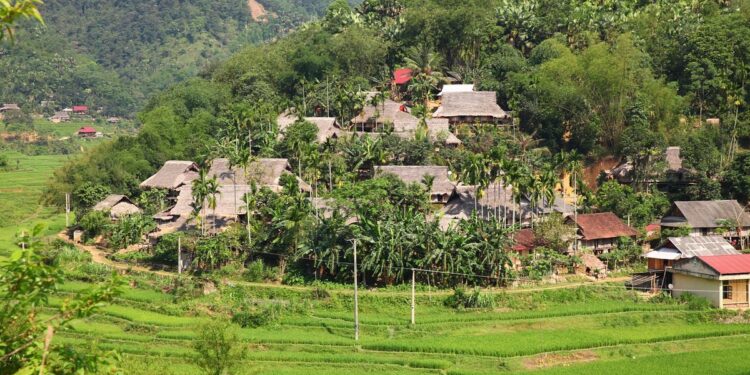
Pu Luong Nature Reserve in Thanh Hoa is a stunning destination for trekking in Vietnam
Pu Luong Nature Reserve in Thanh Hoa is a stunning destination for trekking and exploring the daily life and culture of the Thai and Muong people. Here are some highlights and important things to know:
Highlights:
- Combination of Northern Vietnam’s beauty with beautiful terrace rice fields, magnificent passes, and large fields
- Chance to experience the daily life and culture of the Thai and Muong people
Level of trekking: Moderate to challenging
Best time to trek:
- During rice harvest season, from September to October
- From February to May
How to get there: Catch the shuttle bus that takes you directly to Pu Luong from Hanoi Old Quarter.
Popular treks in Pu Luong:
- Trek to Pu Luong jungle and beautiful small villages like Hang, Kho Muong, Kia villages
- Hieu village – Nua village trek
- Nua village – Son village trek
Things to keep in mind:
- Pu Luong is a huge national forest, but there are still restaurants and accommodation service areas
- No need to worry about staying overnight there.
>>>Read more: Top 4 unspoiled waterfalls and streams near Hanoi
4. Trekking Cat Tien National Park
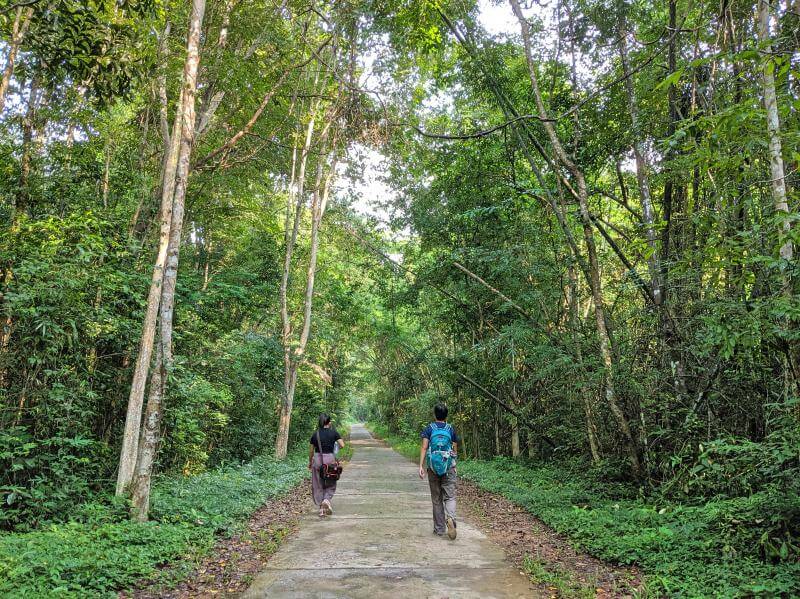
Trekking in Cat Tien National Park is a must for nature lovers visiting Vietnam
Trekking in Cat Tien National Park is a must for nature lovers visiting Vietnam. The park is a biodiversity hotspot located just 160 kilometers from Ho Chi Minh City. It offers visitors the chance to see a range of endangered species, from gibbons to wild boars and sambar deer, in their natural habitat.
Cat Tien National Park has trails of varying lengths, so whether you’re a beginner or an experienced trekker, there’s something for everyone. You’ll be amazed by the park’s diverse ecosystem, which includes 100-year-old trees with exposed roots towering over you. With over 400 species of butterfly and 79 reptile species, you’ll have plenty of opportunities to observe and appreciate the rare flora and fauna of this special place.
If you’re short on time, you can even take an overnight trip from Ho Chi Minh City to explore Cat Tien National Park. So why not take a break from the city and immerse yourself in the natural beauty of Vietnam’s jungle?
Highlights: Cat Tien National Park is a biodiverse treasure trove located between Ho Chi Minh and Dalat, offering the chance to experience nature and spot endangered species. With various trails of different distances, you can explore the forest and see rare gibbons, butterflies, and reptiles.
Best time to trek: The dry season from December to May is the best time for trekking.
How to get there: You can catch a bus from Ho Chi Minh (VND 80,000) or ride your own motorbike.
Popular treks in Cat Tien National Park:
- 30 Botanic Garden Trails
- Ban Sau – Crocodile Lake
- Ta Lai Ethnic Village
>>>Read more: 8 experiences worth trying when traveling to Hue city
5. Trekking in Northern Vietnam – Cao Bang
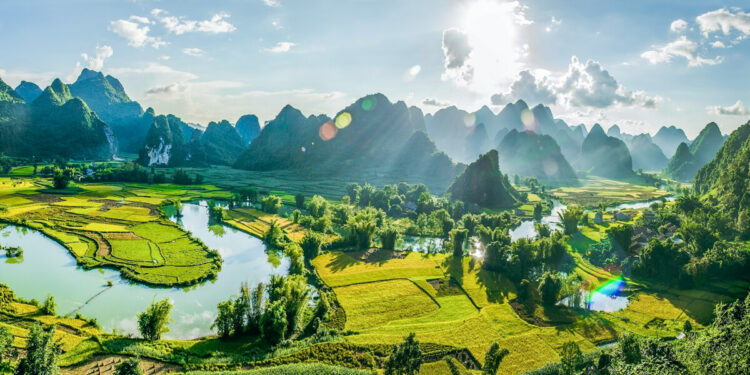
Cao Bang is a must-visit destination for trekking enthusiasts in Vietnam
Cao Bang is a must-visit destination for trekking enthusiasts in Vietnam. The province offers spectacular karst mountain scenery, deep gorges, tiered rice paddies, and stunning waterfalls, creating the perfect backdrop for any adventure.
Located in Northern Vietnam on the border with China, Cao Bang is home to the Ban Gioc Waterfall, which is one of the most picturesque hikes in the country. This majestic waterfall is among the most beautiful in Southeast Asia, and it can be reached on a short trekking tour of North Vietnam in less than a day.
Level of trek: Moderate
Highlights: Cao Bang, a frontier region of North Vietnam, offers a stunning landscape with jagged mountains, winding roads, and rice paddies. The Ban Gioc Waterfalls, Nguom Ngao cave, Thang Hen Lake, Pac Bo cave, and Ky Sam Temple are some must-visit destinations for trekking enthusiasts.
Best time to trek: The ideal time for trekking in Cao Bang is from October to April when the weather is mild and dry.
How to get there: You can take a bus from My Dinh or Gia Lam bus station in Hanoi in the morning or evening.
Popular treks in Cao Bang: Trekking options include the scenic Ba Be National Park, the Pac Po cave-Nam Nhung trek, Tong Cot Village, and the Ta Lung border town.
Things to keep in mind: The trekking level in Cao Bang is moderate, so it’s essential to have appropriate gear and a reasonable level of fitness. Also, consider hiring a local guide for a safer and more rewarding trekking experience.
>>>Read more: Top 5 newly discovered natural attractions in Danang
6. Trekking Cat Ba National Park
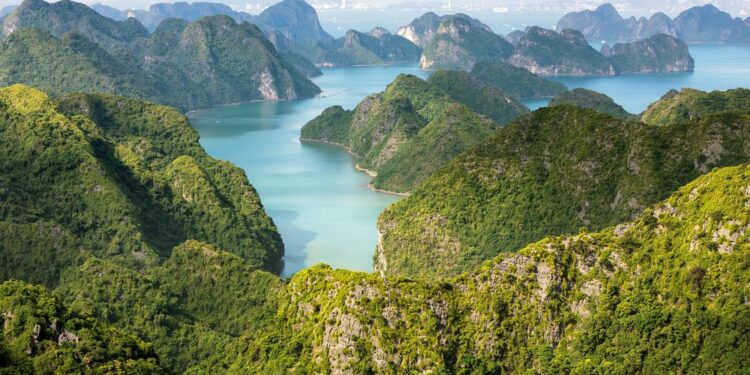
Cat Ba National Park offers a unique trekking experience in Vietnam
Cat Ba National Park, located on Cat Ba Island, offers a unique trekking experience in Vietnam. With easy-level trails, the national park offers a chance to explore the lush green forests and stunning viewpoints.
Level of trek: Easy.
Highlights: Located on Cat Ba island, Cat Ba National Park is a popular destination for trekking in Vietnam. It offers not only beautiful sea views but also a number of highlights and attractions, including a museum, a rehab center, and a small zoo. The park also has viewpoints that make hiking even more enjoyable.
Best time to trek: September to October is the best time to trek in Cat Ba National Park.
How to get there: Catch a shuttle bus in Nguyen Huu Huan street, Hanoi, to get to the park.
Popular treks in Cat Ba National Park:
- Kim Giao Forest – Ngu Lam Peak (1.5 km)
- Trung Trang & Uy Ban Grottoes (1.2 km)
- National Park HQ – Ao Ech – Viet Hai (14km trekking and walking)
Things to keep in mind: Fires, tree felling, branch cutting, and hunting are prohibited in the forest. Also, note that the national park closes at 5 pm.
>>>Read more: Trekking in Vietnam: Binh Lieu mountain
7. Trekking in Ha Giang Vietnam
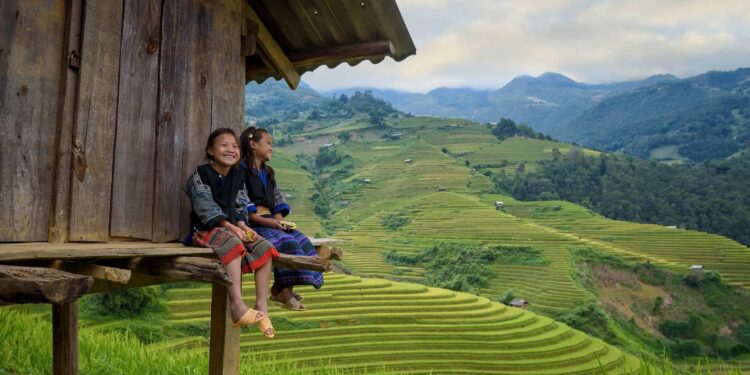
Ha Giang is a must-visit destination for those seeking a unique and authentic trekking experience
Ha Giang, a northern province of Vietnam, is a must-visit destination for those seeking a unique and authentic trekking experience. Unlike Sapa, Ha Giang offers a different perspective on the country’s beauty with its karst mountains, colorful ethnic minorities, and breathtaking views. Although the trekking routes in Ha Giang are shorter, the scenery is still stunning.
Level of trek: Easy.
Highlights: Ha Giang offers stunning views of carpets of flowers, karst mountains, and colorful markets of ethnic minority communities. Notable highlights include Yen Minh, Meo Vac valley, Ma Pi Leng Pass, and Duong Lam village. A highlight of the area is the Ma Pi Leng pass, which offers a panoramic view of limestone peaks and deep canyons. Strolling through the villages and encountering grazing buffalo, weaving ladies and excited children is a common occurrence for those who choose to explore this off-the-beaten-track location.
Best time to trek: The ideal time to trek in Ha Giang is from October to December.
How to get there: You can catch a bus from My Dinh bus station, which takes around 6 to 8 hours.
Popular treks in Ha Giang: Some of the most popular treks in Ha Giang are Dong Van valley, Si Phai Mountain Village, Trung Son – Bo Dot – Hop Nhat, Tam Son town (Heaven’s gate), and Sky Path: Col de Ma Pi Len.
Things to keep in mind: Note that on the map, there is a road between Niem Son and Yen Minh, which is noted as a big road but is actually a mountain track. The best route would be going from Meo Vac through Lung Phin.
>>>Read more: Top 5 motorcycles for backpackers in Vietnam
>>>Read more: Top 8 motorbike rentals in Vietnam for a safe trip
8. Hiking Lang Biang Mountain
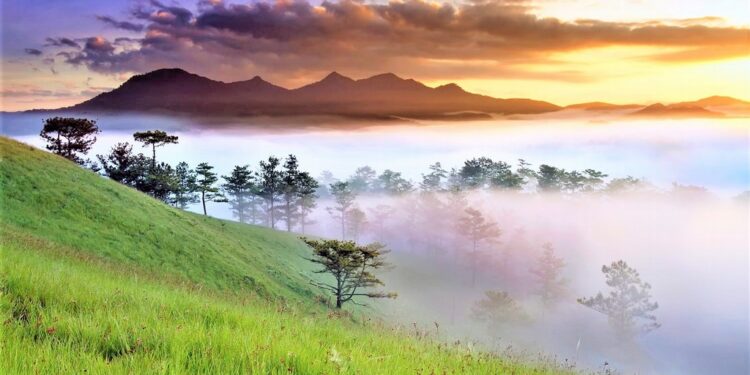
Trekking Lang Biang Mountain, Vietnam is a must-try experience
Lang Biang Mountain, comprised of Lang Biang and Bidoup Ban, is considered the rooftop of Dalat with its two highest peaks in the Lam Vien Highland. This mountain boasts stunning natural landscapes and breathtaking views of Dalat City from the summit. You can choose to camp overnight or complete the hike in a day, while also taking time to experience the canyon and abseil activities.
Level of trek: Moderate.
Highlights: Lang Biang Mountain is located 12 km from Dalat city and offers a mix of nature and culture. The trek is challenging, but the views from the top are worth it.
Best time to trek: September to November
How to get there: Take local bus No.5 from Da Lat bus station or book an online bus ticket from Ho Chi Minh City.
Popular treks in Lang Biang Mountain:
- The most popular trek is to conquer Lang Biang Peak, the symbol of Dalat city.
- Along the way, you will pass through a vegetable farm, pine trees, and jungle forest before reaching the summit.
- From the top, enjoy panoramic views of Dalat and the surrounding areas.
Things to keep in mind:
- The trek is of moderate difficulty, so prepare for physical exertion and bring appropriate gear.
- Respect the local culture and follow the rules and regulations of the trekking area.
>>>Read more: Cost of living in Ho Chi Minh city, Vietnam
>>>Read more: Cost of living in Hanoi, Vietnam
9. Trekking Fansipan, Vietnam’s Tallest Mountain
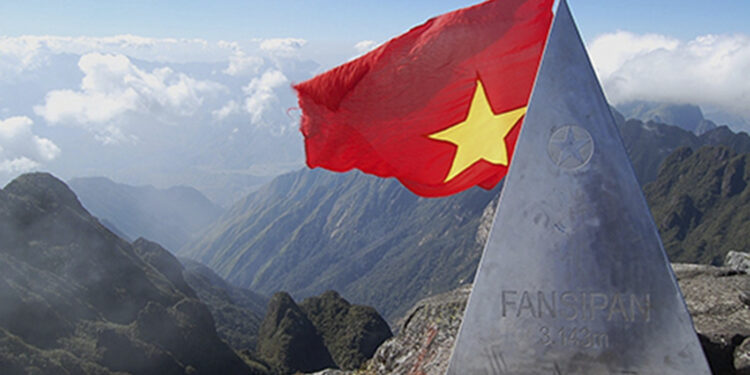
Trekking on Fansipan Mount, you can expect serene gardens and pagodas, and captivating sights from the summit
Fansipan is the highest peak in Vietnam, standing at 3,143 meters (10,312 feet) above sea level, and is known as the ‘Roof of Indochina’. Located in the northern mountain province of Sapa, you can reach the start of the varying trails to the top of Fansipan on an overnight train from Hanoi. During your trek, you will come across serene gardens, beautiful pagodas, and friendly locals making their way up or down the mountain. From the summit, the views are breathtaking, but it can get crowded as the mountain sees around 1,000 trekkers every day due to its access by cable car and various ‘easier’ routes.
Level of trek: Moderate.
Highlights: Each day, Fansipan attracts at least 1,000 trekkers because of the magnificent view from the summit and the beautiful path climbing up. Trekking on Fansipan Mount, you can expect serene gardens and pagodas, and captivating sights from the summit. If you have no experience in trekking, you can consider hiring a porter or using cable cars to reach the summit of Fansipan mount.
Best time to trek: From April to May, and from September to November.
How to get there: Catch a shuttle bus that departs from Old Quarter to Sapa town or take a train from Hanoi railway station to Lao Cai and then catch a bus to Sapa town.
Popular treks in Fansipan Mount:
- Tram Ton, and return on the same trail
- Tram Ton, return over Muong Hoa valley – Cat Cat stream (20km)
- Doc Mit (Binh Lu ward) to the top of Fansipan (for professional trekkers only)
Things to keep in mind:
- If you want to go for a trek in Fansipan, you need to get permission from Hoang Lien Son management board.
- You are expected to pay some fees such as trekking, insurance, forest management, and hygiene fees. The total cost is around VND 200.000.
>>>Read more: Streams and waterfalls near Ho Chi Minh City you should know
10. Trekking Central Vietnam’s Paradise, Phong Nha Ke-Bang National Park
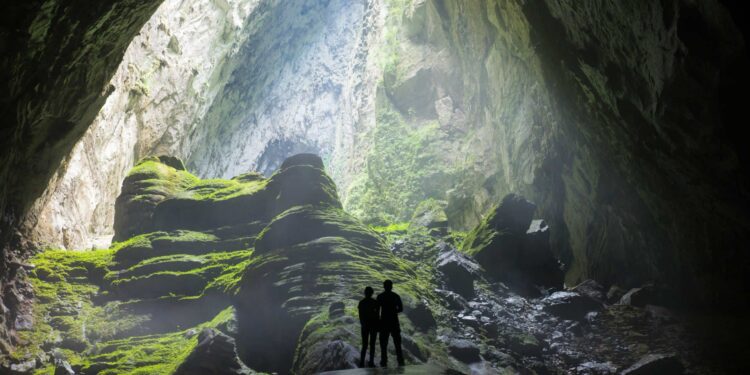
Trekking Phong Nha Ke-Bang National Park – Son Doong Cave
Level of trek: Moderate
Highlights: Phong Nha Ke-Bang National Park is a UNESCO World Heritage Site and home to the world’s largest cave, Son Doong. With over 64.6 miles of underground rivers and caves, trekking in this park offers a unique and fascinating experience.
Best time to trek: from February to August
How to get there: Catch a bus or train from Hanoi to Dong Hoi city, and then take a taxi or bus to Phong Nha town.
Popular treks in Trekking Phong Nha Ke-Bang National Park:
- Day trek through Paradise Cave (4.3 miles)
- Overnight treks through karst mountain scenery, jungle, and caves with breaks at waterfalls and underground rivers
- Four-day trek into Son Doong cave (for those with ample time and budget
Things to keep in mind:
- Some treks require permits, so it’s best to check ahead of time
- Bring suitable trekking gear and clothing
- Respect the natural environment and follow park rules and regulations
>>>Read more: Domestic airlines in Vietnam: a general comparison
How to prepare for your Vietnam trek
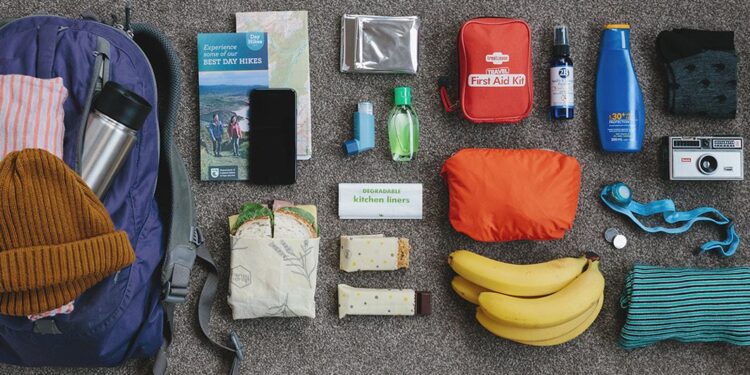
How to prepare for your Vietnam trek
Vietnam is a popular destination for trekking, offering a range of stunning landscapes, from lush jungles to soaring mountains. To make the most of your trek, it’s important to be properly prepared. Here are some tips for preparing for your Vietnam trek:
- Get in shape: Trekking in Vietnam can be physically demanding, so it’s important to be in good shape. Start training well in advance, building up your endurance and strength.
- Pack the right gear: Make sure you have the appropriate gear for your trek, including sturdy and comfortable hiking boots, a waterproof jacket, warm layers, and a backpack to carry your supplies.
- Research the area: Before embarking on your trek, research the area you’ll be trekking in. Learn about the terrain, weather conditions, and any potential hazards. This will help you to pack appropriately and stay safe on your trek.
- Hire a guide: Consider hiring a local guide who knows the area well. They can provide valuable information about the terrain, wildlife, and local customs, as well as ensure your safety on the trek.
- Bring plenty of water and snacks: Trekking in Vietnam can be hot and humid, so it’s important to stay hydrated. Bring plenty of water and snacks to keep your energy levels up.
- Respect the environment and local culture: When trekking in Vietnam, it’s important to respect the environment and local culture. Stick to designated trails, pack out all trash, and avoid disturbing wildlife. Additionally, learn about local customs and be respectful of the local people you encounter on your trek.
>>>Read more: 8 things to bring when going on a cruise in Vietnam
When to go trekking in Vietnam
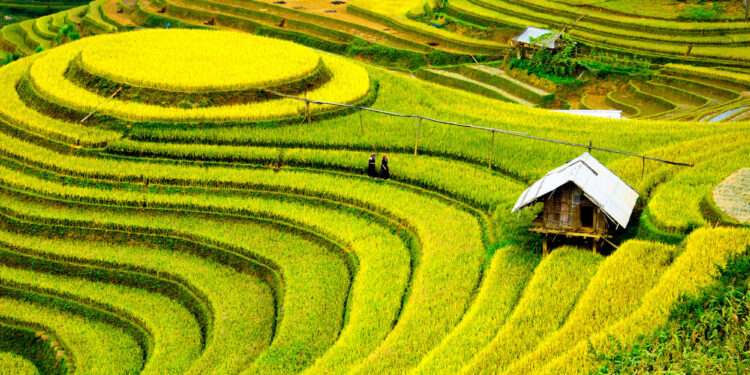
When planning a trekking trip in Vietnam, it’s important to consider the best time to visit each region
When planning a trekking trip in Vietnam, it’s important to consider the best time to visit each region. The country’s weather patterns can vary greatly from one area to another, and choosing the right time of year can greatly affect your experience. Here are some guidelines on when to go trekking in North, South, and Central Vietnam.
Best Time to Trek North Vietnam
Late September to October is the best time to go trekking in Northern Vietnam. During this time, the rainy season has ended, and the scenery is stunningly beautiful. The climate is also pleasantly cool, making it comfortable for hiking. However, it’s important to note that the temperature can drop significantly later in the year, so make sure to pack accordingly.
Best Time to Trek South Vietnam
South Vietnam is warm and humid year-round, but the best time to go trekking in this region is during the shoulder seasons. From December to February and from June to August, the weather is cooler and drier, making it perfect for trekking. Avoid trekking in South Vietnam during the summer months from March to May, as it can get unbearably hot, and the rainy season from June to November.
Best Time to Trek Central Vietnam
Central Vietnam is prone to typhoons and heavy rainfall during the rainy season, which occurs from August to November. Trekking during this time can be dangerous and unpleasant. The best time to go trekking in Central Vietnam is from March to August after the rainy season has ended. However, during this time, it can still be quite wet, and the temperatures can be a little cool. From September to November, the weather is drier, but it’s important to note that this is still considered the rainy season. It’s best to avoid trekking in Central Vietnam from August to November to ensure a safe and enjoyable experience.
>>>Read more: Best time to visit Vietnam: all things that you should know


